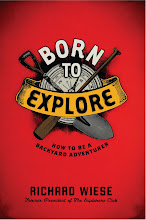It was also the most remote place that I had ever been outside of Antarctica.

The land is very old , the weather quite tropical and it even has a primordial smell to it.
Very few people travel here and even the native aboriginal people who once called this home can no longer be found.
Our mission was to try to find a creature with the jaws of a crocodile, the tongue of a snake and the body of a fish called the Barramundi known to change its sex.
.

We knew that in order to find this exotic creature we had to leave our western beliefs and ways of thinking behind and try to adopt the complex beliefs in creation, spirits and culture, that gives Australian Aborigines a religion that is distinctly different from any other religion in the world.
When talking about this way of looking at life one cannot begin to understand it without a knowlodge of "dream time".


The term dream time refers to how these ancient people viewed creation and the idea that every object has in their lives.
We theorized that our lair the mythical Rainbow Serpent was an amalgam of many creatures—and one of the oldest told stories in the world.

The mission was to find clues to its origin. Our guide Max Davidson, an inspiration for the movie
“Crocodile Dundee,” led us on an epic journey to one of the most remote places on Earth—Arnhem Land contains hundreds of miles of rock art, it is the largest collection of this type of art in the world, dating back almost 50,000 years ago. Rock art, or petroglyphs, provide insight into the lives of the original inhabitants of Arnhem Land . What we found was remarkable.
From hand prints to animal and human figures, petroglyphs appeared in almost every nook.
It was quite plausible in many cases we were the first westerners to set eyes on some of these drawings since there creation thousand of years ago

Our expedition came to a pinnacle when we found the 15,000 year-old drawing of the Rainbow Serpent. It was huge—far eclipsing any of our previous findings. One can only theorize what people were thinking 15,000 years ago—but the Rainbow Serpent was important enough for society to record it. We believe the legend is an origin story—told from generation to generation in an effort to preserve an understanding of their own creation.

No comments:
Post a Comment